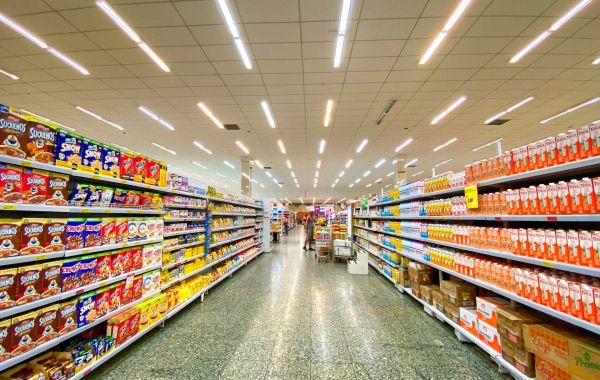The retail industry is undergoing a major transformation. With advances in technology, retailers are now able to reach customers in ways that were not possible before. From online stores to automated shopping experiences, technology is rapidly changing the face of the retail industry.
Emerging Technology in Retail
The retail industry is undergoing rapid changes thanks to the introduction of various emerging technologies. From automated checkout to food robotics, there are numerous ways that technology is reshaping the retail industry. By leveraging emerging technologies, retailers are able to optimize their customer’s shopping experience and gain a competitive advantage over others in the market.
In addition to providing customers with an enhanced shopping experience, emerging technology in retail industry can also increase the efficiency and accuracy of tasks such as inventory management, customer data collection and analysis, and employee training. By utilizing these advancements, retailers are able to better track customer preferences and improve their customer service. This, in turn, leads to increased sales and improved customer loyalty.
Frictionless Checkout
The retail industry is on the verge of a major transformation, and it's largely thanks to advances in technology. One of the most significant changes is the introduction of frictionless checkout. As the name suggests, frictionless checkout refers to a system that makes the payment process as smooth and easy as possible for customers. By using digital wallets, RFID technology, facial recognition and more, retailers can significantly reduce the amount of time customers spend waiting in line to pay. This allows retailers to increase customer satisfaction and boost their bottom line.
In addition to reducing wait times, frictionless checkout also has the potential to enhance the customer experience. For example, retailers can use facial recognition software to recognize frequent customers and tailor their shopping experience accordingly. This could include offering discounts or product recommendations based on past purchases.
Immersive Experiences
In recent years, the retail industry has seen a major shift in consumer behavior, with customers increasingly opting for interactive shopping experiences over traditional physical stores. One way that retailers are embracing this trend is by using immersive experiences to drive engagement and loyalty. By integrating virtual reality (VR) and augmented reality (AR) into their stores, retailers can provide an unforgettable shopping experience that can draw customers in and keep them coming back for more.
VR and AR technology can be used to create virtual environments where customers can explore products without having to actually try them out in person. This allows customers to get a better feel for the product before they buy it, reducing the risk of returns. Furthermore, the technology can be used to allow customers to customize products to their liking, creating a more personalized shopping experience.
AR can also be used to provide customers with more information about products while they shop. For example, shoppers could use their phones to scan a product label and get more details about it before making a purchase decision.
Food Robotics
Food robotics is an emerging technology that is transforming the retail industry in exciting ways. By utilizing robots in production, retailers are able to optimize their operations, reduce costs, and improve customer experience. With robots working in the back-end of operations, retail stores can make their front-end experiences more convenient and efficient.
The most common application of food robotics is in grocery stores and supermarkets. Robots can be used for tasks like product stocking, sorting, picking and packing. They are also becoming increasingly popular in restaurants, cafes and other food service establishments for food preparation and delivery. In a world where speed and convenience are increasingly important to customers, robots can help food retailers deliver faster and more accurate orders.
Robots also provide a more hygienic solution than manual labor. As the demand for safety and hygiene increases, food robotics can be used to ensure that all products are handled correctly and that sanitation standards are maintained at all times. This is especially important in high-volume establishments such as fast food restaurants.
Micro Fulfillment
Micro fulfillment is one of the emerging technologies in the retail industry that is revolutionizing the way retailers do business. Micro fulfillment is a type of order fulfillment process where orders are fulfilled through small, automated warehouses that are typically located within a retail store or other urban areas. By using this technology, retailers are able to offer faster delivery services, improved accuracy, and lower shipping costs than traditional warehouses.
With micro fulfillment, orders can be fulfilled quickly and accurately with the help of robots that take orders from the customer and then pick, pack, and ship them to the customer's door. This automation technology is becoming increasingly popular among retailers as it helps to reduce costs and improve customer satisfaction. In addition, micro fulfillment can provide customers with a more personalized shopping experience as they can choose which products to order and when to receive them.
Conclusion
The retail industry is undergoing a technological revolution, and IT solutions are at the forefront of this change. With emerging technology such as frictionless checkout, immersive experiences, food robotics and micro fulfillment, retailers can create better customer experiences that drive loyalty and growth. These new technologies also provide opportunities for businesses to increase efficiency, reduce costs, and gain competitive advantage. As the industry evolves, it’s important for retailers to stay informed and embrace these innovations to ensure they remain competitive. By investing in the latest retail industry IT solutions, businesses can ensure they remain at the cutting edge of customer experience and gain a competitive edge in the marketplace.







